I'm starting a new thread in the event this proves useful
OK. Some of this will be redundant,as it has already been touched on here, but just to keep my own head straight, I am going to go all the way through. This is by no means comprehensive, but should hopefully give a basic outline for using buses.
Open a new project.
First off, there is nothing special about the Master bus. It is just like any other bus. However, in general, it should have the ONLY output directed to your sound card. For this exercise, we will make Subgroup 1 our Master bus. Click on the white Sbgrp1 label, and rename it Master.
We are going to apply some reverb to all tracks, so change the name of Sbgrp2 to Reverb. If your sound card has an additional pair of outputs (ie 4 outs,usualy 1/2,3/4) you can do a headphone mix. Mine doesn't, but we will throw a headphone mix in here anyway. rename Sbgrp3 to Phones. Your console should look like this.

Now let's move to the tracks. Import or record some sound into tracks 1-3. Now hit play. By default, all tracks should have the output set to your sound card, so it will look like the following. Note that there is no activity in the buses yet.

Now we want to send our primary outputs to the Master bus Click on the Output box at the bottom of your screen. Select Master. Repeat this for all three tracks.
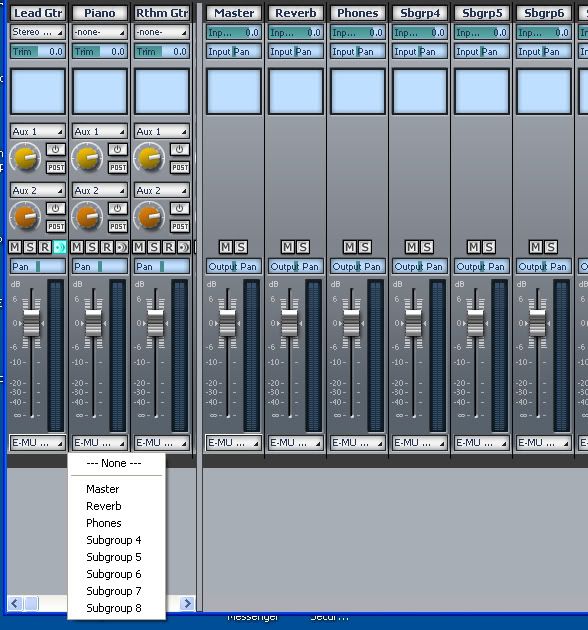
Now hit play. We see a couple things. All of the signal is being routed through the Master bus. and we are getting some clipping, as shown by the red Clip indicators in the Master bus meter. To correct that, lower the track levels, and leave the Master set to 0.
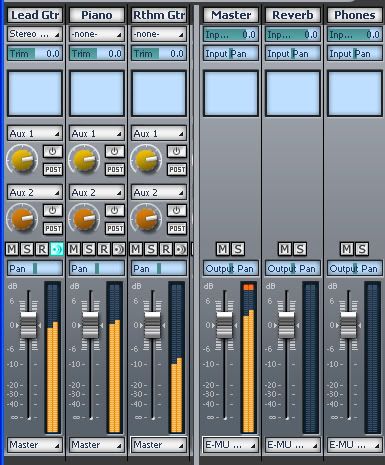
Now we get to the fun stuff. Insert your reverb of choice in the FX bin of the Reverb bus, and set it to 100%wet. Click on the Post button on all three tracks, so it lights up and shows Pre. Then click on the Aux 1 button in the track, and change it to Reverb. We are now splitting the signal and sending a copy of our tracks to the Reverb bus. It is not affected by the track volume fader, because it is being split out before the volume fader comes into effect, hence Pre-Fader. Click the Enable button on each track. Change the Output of the reverb bus to Master.
Now you will see this
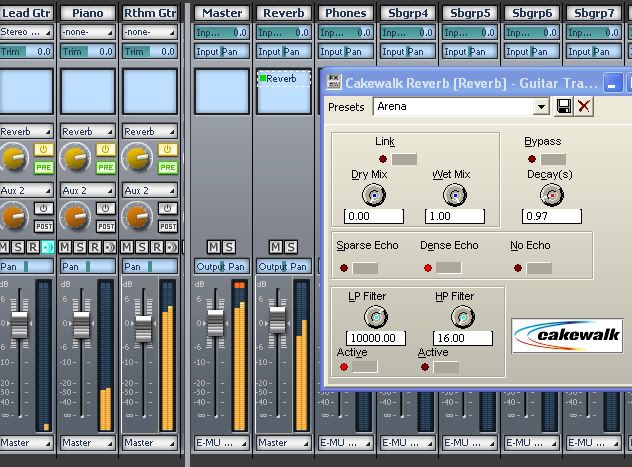
It's probably sstarting to sound pretty bad, if you have an aggressive reverb set, and you may be getting some clipping. But just for fun, lets listen to only the reverb. Slide all of your track faders to the bottom. Now hit play. What you see and hear is the signal being sent through the Reverb bus only.
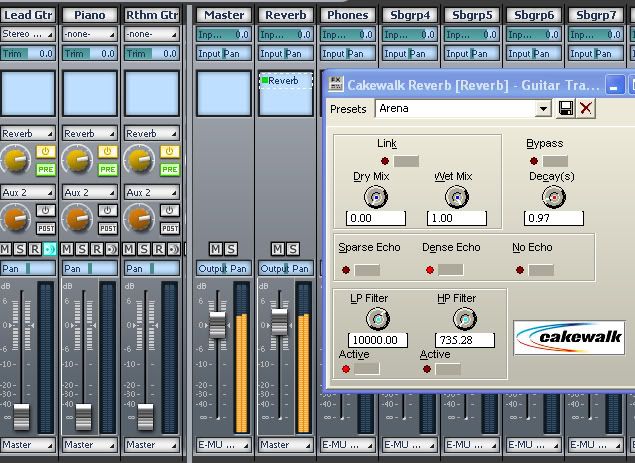
Now bring your track faders back up. At this point, you can control the presence of the individual instruments, as well as the reverb from the virtual room, and it all goes to the Master bus.
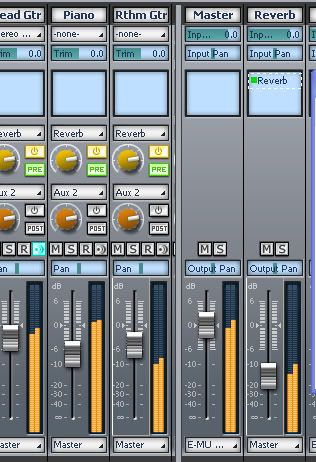
Let's explore the headphone mix. Your singer may want the mix louder or softer, but you don't want to disturb the basic mix. This is where Aux 2 comes in. If you set this to Post-fader, your singer will hear the balance of the mix, withuot affecting anything else. In this screen shot, I have shut everything else down to show that a signal gets to the Phones bus, independently from the other buses.
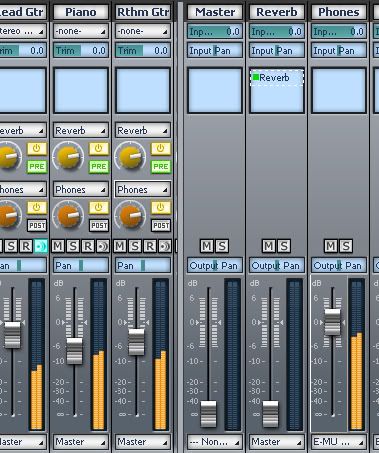
I hope this all makes sense. Entire books could, and have been writen about this, and this is just a quick sketch.